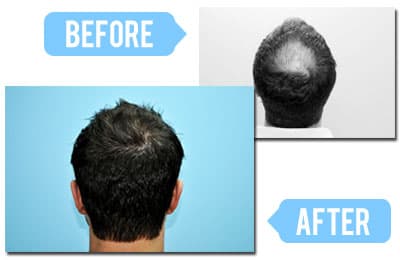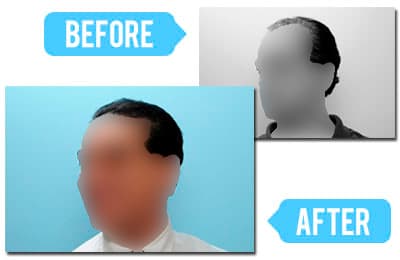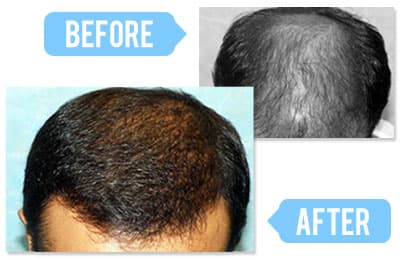Male Hair Transplant for Natural Lasting Results
The Ultimate Guide to Men's Hair Loss Therapy and Hair Restoration Solutions
Hair loss is a common concern for men of all ages. Whether it's a receding hairline, thinning crown, or full-blown bald patches, losing hair can significantly impact confidence, self-esteem, and overall appearance. Fortunately, modern advancements have revolutionized the way we approach hair restoration. Today, men’s hair loss therapy, including surgical and non-surgical options, is more effective than ever.
In this article, we’ll cover everything you need to know about hair restoration for men, the benefits of a male hair transplant, and reliable solutions to promote hair regrowth for men.

Understanding Male Hair Loss
Before diving into treatments, it's essential to understand why men lose hair. The most common cause is androgenetic alopecia, also known as male pattern baldness. This condition is hereditary and affects approximately 50% of men by the age of 50.
Other Causes Include:
- Stress and anxiety
- Poor diet and nutrition
- Hormonal imbalances
- Medical conditions (like thyroid disorders)
- Medication side effects
- Scalp infections
Identifying the root cause helps in selecting the most effective therapy or treatment method.
Men’s Hair Loss Therapy Modern Approaches
Men’s hair loss therapy now offers multiple treatment options that range from lifestyle changes to high-tech interventions. These therapies can slow hair loss, stimulate dormant follicles, and in many cases, reverse thinning.
Popular Non-Surgical Therapies:
1. Minoxidil (Topical Treatment)
Minoxidil, commonly known as Rogaine, is an over-the-counter medication applied directly to the scalp. It helps increase blood flow to hair follicles, promoting hair regrowth and slowing hair loss.
2. Finasteride (Oral Medication)
Finasteride, sold under the brand name Propecia, is a prescription pill that prevents testosterone from converting into DHT, the hormone responsible for male pattern baldness. It is highly effective when used consistently.
3. Platelet-Rich Plasma (PRP) Therapy
In this therapy, a patient's blood is processed to extract plasma rich in growth factors. The plasma is then injected into the scalp to rejuvenate hair follicles and encourage regrowth.
4. Low-Level Laser Therapy (LLLT)
This painless treatment uses red light wavelengths to stimulate hair follicles, increase cellular activity, and promote hair regrowth over time.
5. Microneedling
Microneedling involves tiny needles creating micro-injuries in the scalp to stimulate collagen production and enhance the absorption of topical products like Minoxidil.
These therapies are best for men in the early to moderate stages of hair loss. They can be used individually or combined for enhanced results.
Hair Restoration for Men Long-Term Solutions
When hair loss becomes extensive, non-surgical treatments may not offer sufficient results. In such cases, hair restoration for men involves advanced surgical techniques to provide permanent, natural-looking outcomes.
Male Hair Transplant The Gold Standard
A male hair transplant is the most effective solution for advanced hair loss. It involves moving healthy hair follicles from a donor area (usually the back of the scalp) to balding or thinning areas.
Two Main Techniques
1. FUE (Follicular Unit Extraction)
- Individual hair follicles are extracted one by one.
- Less invasive, with minimal scarring.
- Faster recovery and natural-looking results.
2. FUT (Follicular Unit Transplantation)
- A strip of scalp is removed, and follicles are extracted from it.
- Often more affordable for larger transplant areas.
- Slightly longer recovery time.
Why Consider a Hair Transplant?
- Permanent and natural results
- High success rate
- Boosts confidence and appearance
- Requires only local anesthesia and minimal downtime
Hair transplants have evolved significantly over the past decade, with top clinics offering highly aesthetic results that are virtually undetectable.
Hair Regrowth for Men Tips and Techniques
While medical treatments are important, hair regrowth for men also relies on healthy habits and natural support methods.
Essential Tips for Promoting Hair Growth:
1. Nutrient-Rich Diet
Hair follicles thrive on nutrients. Eating a diet rich in vitamins like biotin, zinc, iron, and omega-3 fatty acids can significantly support healthy hair.
2. Proper Scalp Care
Keeping the scalp clean and free from buildup or dandruff improves blood flow and encourages hair regrowth. Use sulfate-free shampoos and conditioners with DHT-blocking ingredients.
3. Avoid Heat and Harsh Styling
Excessive heat styling or tight hairstyles can damage follicles. Let your hair dry naturally and avoid styles that pull at the roots.
4. Stay Hydrated and Reduce Stress
Hydration and mental well-being are both linked to better hair health. Engage in activities like yoga, meditation, or exercise to manage stress.
5. Supplements
Supplements with biotin, saw palmetto, and collagen peptides may support hair regrowth when used in combination with other treatments.
Choosing the Right Clinic or Specialist
If you're considering any form of hair restoration for men, it's important to consult a qualified specialist. Look for clinics with:
- Experienced surgeons
- Transparent before-and-after galleries
- Positive patient reviews
- Customized treatment plans
- Clean, accredited facilities
A consultation will determine whether you are a good candidate for a male hair transplant or other therapies and help you set realistic expectations.
FAQs
1. What is the most effective men’s hair loss therapy ?
The most effective therapy varies by individual. For early-stage hair loss, Finasteride and Minoxidil work well. For advanced cases, a hair transplant offers permanent results.
2. Is a male hair transplant painful ?
Hair transplants are done under local anesthesia and are generally painless. Most patients experience mild discomfort during recovery, which resolves in a few days.
3. How long does it take to see hair regrowth after treatment ?
With treatments like Minoxidil or PRP, results may appear in 3–6 months. Hair transplant results typically become visible in 6–12 months.
4. Can hair loss be completely stopped ?
Hair loss can be slowed and even reversed, especially if treated early. Consistent therapy is key to maintaining results.
5. What is the cost of a male hair transplant ?
In the UK, hair transplants typically range from £3,000 to £8,000, depending on the extent of hair loss and the technique used.
6. Are there any side effects of hair loss medications ?
Finasteride may cause side effects like reduced libido in some men. Minoxidil can cause scalp irritation. Always consult a doctor before starting medication.
Conclusion
Hair loss doesn’t have to be a permanent struggle. With today’s advanced men’s hair loss therapy options and effective hair restoration for men, it's possible to regain both your hair and your confidence. Whether you're considering a male hair transplant or non-surgical treatments for hair regrowth for men, the right solution is out there. Early action and expert advice are your best allies in the journey to restoring a full, healthy head of hair.
BOOK YOUR FREE
CONSULTATION
Male Pattern Baldness (MPB) is progressive. A Stage 3 vertex can become a Stage 5 in less than 18 months. Waiting increases the cost and difficulty of your surgery.
Or give us a call on
020 8902 2270
(tap to call from your mobile)
Our team has helped many clients explore hair restoration options — see real patient stories.
Our hair products are second to none, therefore we’re proud of the positive feedback from many clients over the years. See for yourself the dramatic transformations brought about by regular use of HGC products and treatment. (Individual outcomes vary, but many clients report noticeable improvements over time.)



